Problematic Creators: How Do We Interact With Their Work?
As we go forward in technological progress, we gain greater insights into historical documents and people’s lives. Documents once isolated to archives can be found online, and people reveal much about their personal lives and opinions online, creating a public record. Now, though in the past it was easy to be unaware of what others think or do, one’s actions are magnified for others’ consumption.
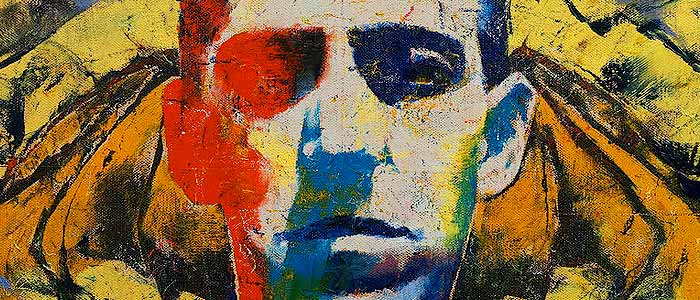
The purpose of this article is not to condemn a single artist as the worst person to exist or irredeemable. It is also not meant to tell anyone what works they can and cannot enjoy. The reader or consumer is the only judge of what they want to or will not watch, read or engage with.
What Does “Problematic” Here Mean? Is This a Part of Cancel Culture?
Problematic. A common word. There’s even a Tumblr page cataloguing celebrities’ actions. Orlando Jones, upon calling Sally Hemings the “original Olivia Pope” in reference to the character in Scandal, even submitted himself to the now-defunct Your Fave is Problematic. 1 Jones then apologized “without qualification or equivocation.”
Is your fave problematic? It’s possible. “Problematic,” stemming from the early seventeenth century, means “constituting or presenting a problem or difficulty.” 2 Here, it will mean a creator whose words or actions which have stirred controversy. Some of these accused actions are more severe than others, so proceed with caution.
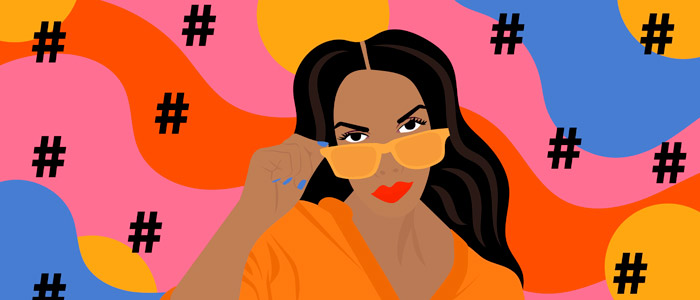
This article is not intended to extensively discuss cancel culture—the name for when someone, typically on social media, is revealed to have views deemed negative, bigoted or inflammatory, and they are “cancelled,” which tends to come in the form of several public call outs or shunning. Most of all, the article will explore the relationship of the artist with their own work and the audiences’ engagement with both the creator and their creations.
The Quality of the Work
Some have defended artists who committed atrocious actions based off the merit of their work. Artists with such defenders are Roman Polanski, who raped a thirteen-year-old child, and Marion Zimmer Bradley, who molested children, including her own, but there are those that claim the artistic merit of Polanski’s films and the feminist nature of Bradley’s fantasy novels circumvent their behavior.

Polanski’s defenders include Guillermo del Toro, Meryl Streep, Wes Anderson, Whoopi Goldberg, Natalie Portman, Tilda Swinton, Darren Aronofsky, Martin Scorsese, Alejandro Gonzalez Inarritu, David Lynch, Harrison Ford, Woody Allen (shocker!), and more.
Ultimately, deciding whether the merit of the work overpowers the harm and trauma caused by a creator depends on the person interested in consuming the work. Boundaries differ, and for many, crimes such as child sexual abuse will forever taint an artist’s legacy and their creations. Can the ideas of a work surpass their author if the author did not live by them? When it comes to Bradley’s feminist reputation, the idea of equality for women certainly didn’t extend to the treatment of Moira Greyland, her daughter, who she molested from the ages three to twelve. It was also Bradley’s beloved reputation and influence that made Greyland afraid to speak out while her mother was still alive.
[O]ne reason I never said anything is that I regarded her life as being more important than mine: her fame more important, and assuredly the comfort of her fans as more important. Those who knew me, knew the truth about her, but beyond that, it did not matter what she had done to me, as long as her work and her reputation continued.
Jessica Jernigan explains her quandary in “The Book That Made Me a Feminist Was Written by an Abuser” 3:
This is, of course, a version of the question we’re all asking ourselves at the moment. How do we separate the artist from the art? Should we? Can we? I have found that my own answers vary. Woody Allen’s face makes Annie Hall, Crimes and Misdemeanors, and Hannah and Her Sisters — all movies I’ve adored — impossible. I’m also done with Louis C.K., but I’m not even ready to think about the colleagues and collaborators — Pamela Adlon? Aziz Ansari? — who have supported him, even as I, myself, was long willing to let “rumors” be “rumors.” Losing Kevin Spacey isn’t hard for me, but forswearing Harvey Weinstein forever means forgetting about a long list of great movies. And Weinstein was a producer — a facilitator more than a creator. Is his connection to a film close enough to make that film anathema?
Jodi Kantor, Megan Twohey, and Ronan Farrow’s reporting on Weinstein seems to be a tipping point for sexual harassment and assault in Hollywood, but we’re also seeing women and men come forward in journalism, publishing, and academia. The question of separating the abuser from his work metastasizes, and I don’t have any easy answers. Or, rather, I do have one easy answer: When someone says they’ve been assaulted, abused, harassed, I believe them. But I believe them, in part, because of lessons I absorbed from The Mists of Avalon.
So, what to do with this once-beloved book?
Is the Author Dead or Alive?
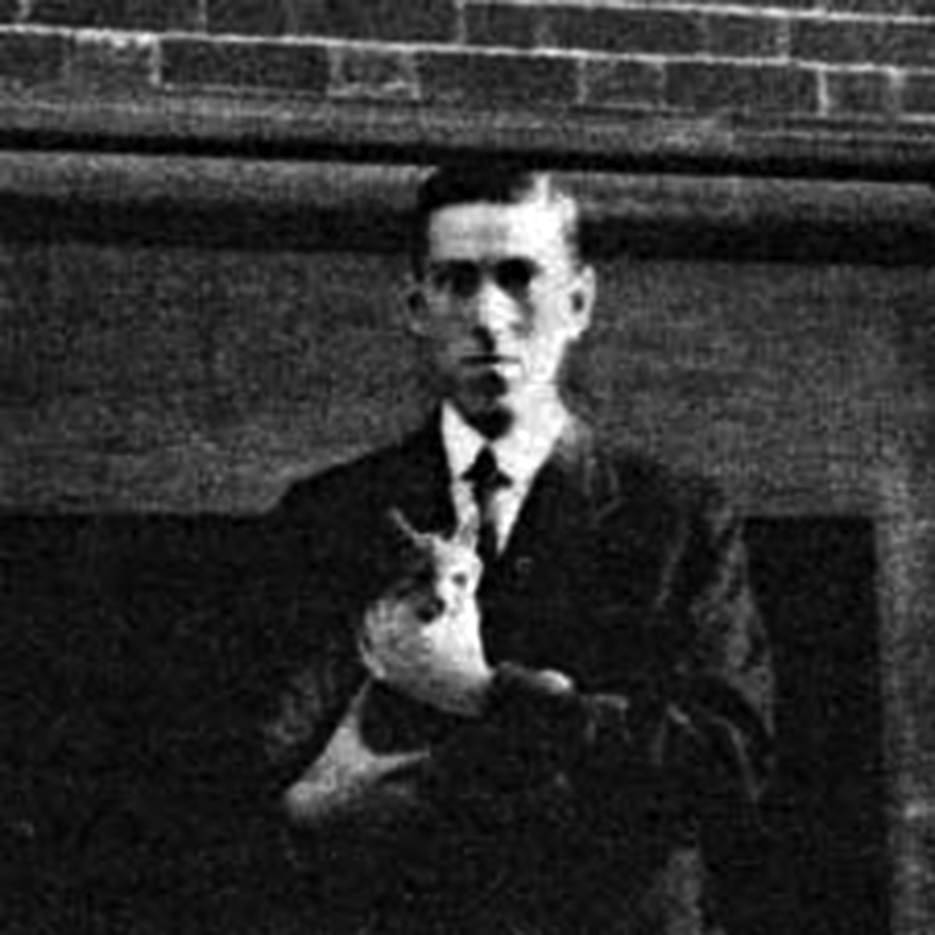
In 2014, the World Fantasy Awards faced controversy regarding their trophy, the “Howard,” which was a bust of Weird horror author H.P. Lovecraft’s face to commemorate the convention’s first appearance in Providence, Rhode Island, where Lovecraft lived most of his life. Controversy over the bust had occurred before when, in 1984, Donald Wandrei criticized and rejected the trophy for being an unpleasant-looking caricature, which is difficult to argue against.
Then, Nnedi Okorafor, the first black author to win the WFA “Howard,” expressed her discomfort of the award being in Lovecraft’s likeness because, despite liking his work, she knew of his bigotry and how he would have diminished her own humanity in his eyes. Okorafor said:
A statuette of this racist man’s head is in my home. A statuette of this racist man’s head is one of my greatest honors as a writer. 4
This led to a petition by Daniel José Older to change the bust, and this did come to pass, though with backlash from individuals such as Lovecraft scholar and biographer S.T. Joshi.
H.P. Lovecraft, in his many letters to correspondents, covered a good many topics, but he also revealed his racism, xenophobia, homophobia, and anti-Semitism. While his views did shift over time, and he softened in his language, he never completely relinquished his prejudices.
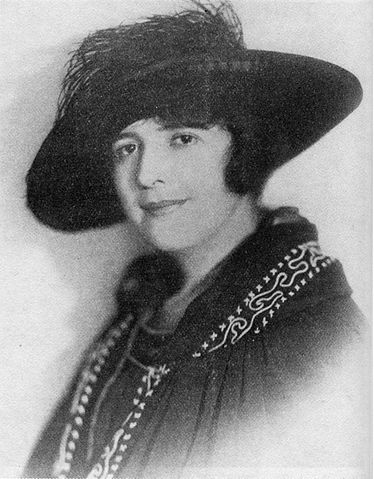
While some arguments have pointed to his brief relationship with Sonia Greene, a Jewish writer of Eastern European descent, as evidence of his change, he considered her “one of the good ones” because she was assimilated. Not only that, but Lovecraft’s fervent racism took on an extreme when he moved to New York during the marriage and seethed almost violently at the diversity versus the more homogeneous, WASP-y population of 1920’s Providence.
To his wife, Lovecraft would also make remarks about Jewish people or even his Jewish friends, such as writer Samuel Loveman, who had no idea of Lovecraft’s anti-Semitism and homophobia (Loveman was also gay) but penned “Of Gold and Sawdust” after Lovecraft’s death to profess his deep hurt once Greene confided to him Lovecraft’s true views, in which the prolific Providence writer had said, “Too bad Loveman’s a Jew.”
Others may argue someone saying they are more open and accepting than a dead man come across as condescending, as there is no way to retroactively confront Lovecraft for his beliefs. At the end of the day, it is worthy considering, when we discuss the actions of an artist who has done harm, what we want to occur as a product of that knowledge.
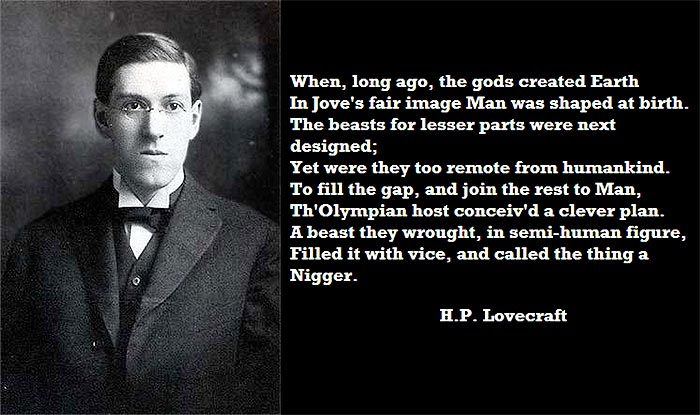
When we bring up Lovecraft’s racism or a creator’s beliefs or actions, what do we hope to accomplish? Berate someone for liking the work of a person who has done bad things—or educate and have an honest discussion? The latter is emotionally exhausting and difficult with all the complexities of human beings, but it allows for the conversation to be more than the initial call out of calling something or someone bad. Calling something bad is not an insubstantial step, but the engagement and conversation can go further.
For every story, there is a counter-story. 5 If you support equality and despise bigotry, that is a start, but we must consider what we do with that sense of empathy and justice when we learn the how’s and why’s of prejudice, the terrible insidious nature of bigotry where even a talented or otherwise good creative person can have repulsive thoughts toward their fellow human beings. Where someone as timid and polite as Orson Scott Card—often defended for said demeanor—can be against equality for a group of marginalized people.
This is the sneaky power of prejudice, where a person can claim they do not hate and only love while seeing another group as less than human. An otherwise good person can be swayed to despise those who need the most kindness.
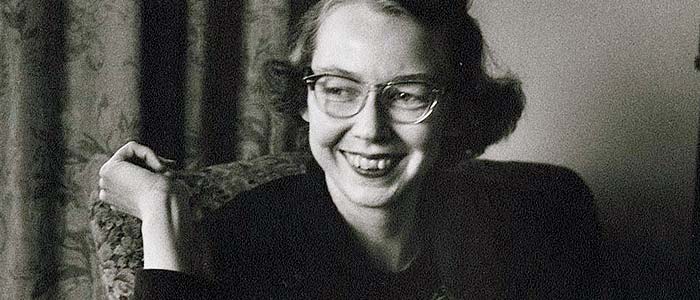
Many authors of similar renown had bigoted pasts: Flannery O’Connor, while stating she supported racial equality, would say racist jokes to bother her pro-civil rights friends and had a “hate the sin, not the sinner” response when a friend was kicked out of the military for being a lesbian. 6 Robert E. Howard, Roald Dahl, Dr. Seuss, Jack London, Sylvia Plath, T.S. Eliot, and Ezra Pound have all produced work meaningful to others but with prejudice either in the work, their personal beliefs or both.
And honestly, there’s not enough time to talk about the newer Romantics sans perhaps John Keats. If you have seen the name of Lovecraft’s childhood cat commemorated in “The Rats in The Walls,” there’s also the initial name for Agatha Christie’s And Then There Were None, which comes from a minstrel song.
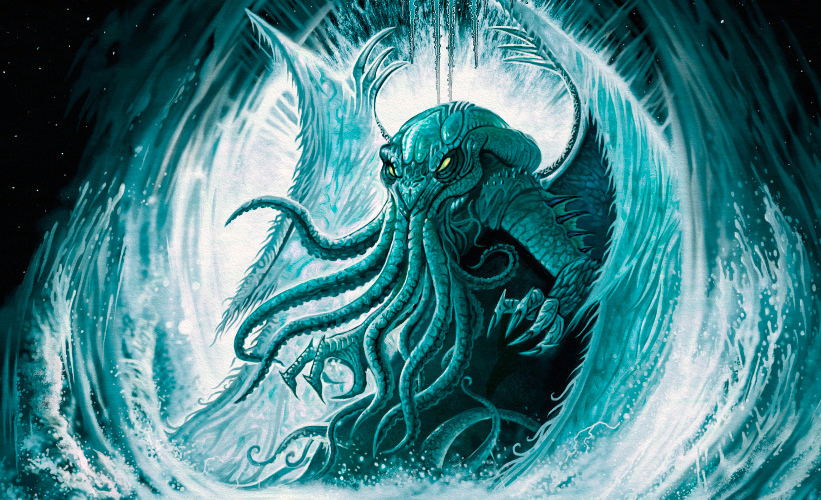
All these creatives are dead. Lovecraft died in 1939, and there is no Lovecraft estate; his original works, though the copyright has been at times disputed, are mostly in the public domain. The impacts of their works–however one may frame them–do not go away. Lovecraft was a complicated man with a difficult life; he suffered the loss of his grandfather and lost his childhood home. Because his grandfather’s finances were mismanaged, his mother was constantly stressed about finances and deteriorated, often taking out her frustrations on her son, who entered a suicidal breakdown in early adulthood and didn’t enter the workforce to ease the monetary burden. Both his parents died in a sanitarium, and Lovecraft lived in poverty, his poor diet contributing to his painful death from a rare cancer of the small intestine.
That being said, it is entirely understandable that speculative fiction readers and writers of color are uncomfortable engaging with the memory of someone who saw their identities as inferior and would have provided no sympathy toward them. It is a shame that a man who could be so warm and humorous with those he cared for could not feel empathy for others who were suffering because of institutional oppression.
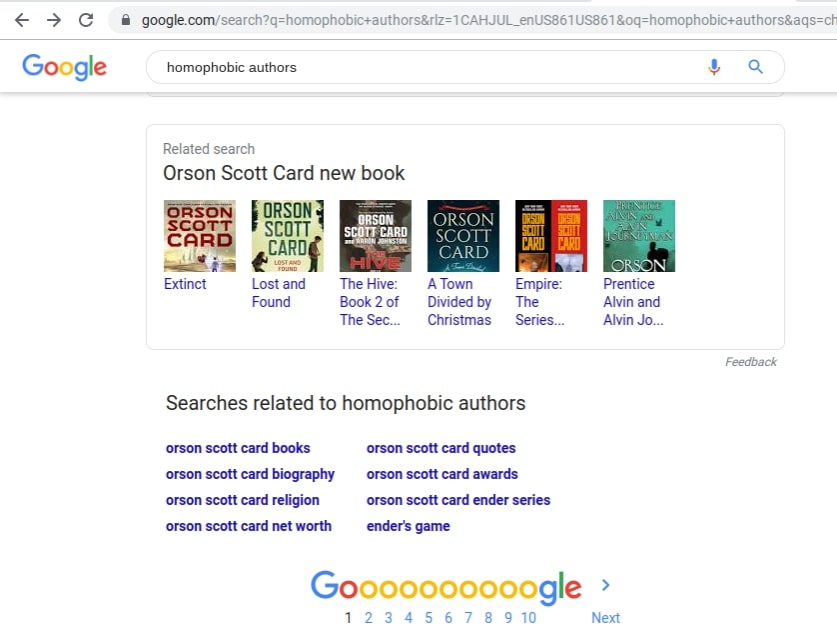
As a queer and disabled person who is often confronted by homophobia and ableism/eugenics support in beloved classics, the author of this piece understands and empathizes with this reaction. On an emotional level, it is similarly understandable as readers who want to avoid Orson Scott Card for his homophobic beliefs.
The difference between Lovecraft versus an author like Card lies in that a) Card seems to be self-sufficient whereas Lovecraft was impoverished and died obscure and b) Card is alive and can still profit from purchases of his work.
Choosing to buy Card’s novels, even while verbally condemning his views, does offer monetary support, which may then, no matter how little, go to anti-LGBTQIA organizations. While unintentional, even if the cause is the consumer’s personal enjoyment, buying an artist’s work when they condone oppressing others may come across as tacit approval and rewarding their behavior.
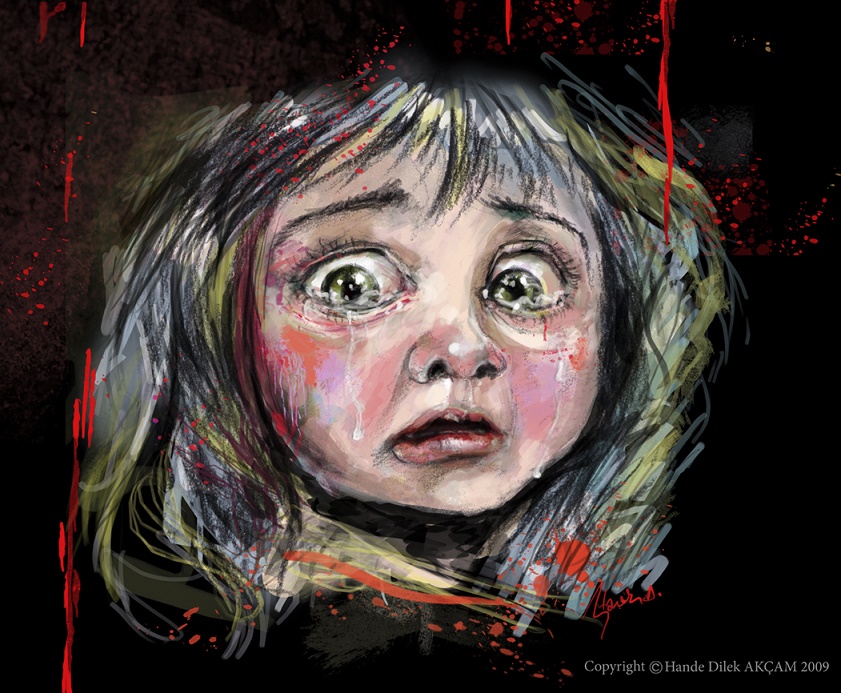
There are messy cases, such as with Marion Zimmer Bradley, whose profits now all go to a charity for child abuse victims, but reading a story made by a woman who sexually abused her children can leave a bad taste in one’s mouth and sour whatever fictional narrative Bradley created.
On one hand, royalties on single copies are negligible when accounting for other expenses. A traditionally published author receives very little (perhaps ten or fifteen percent) when a copy of their work is bought.
On the other hand, Card might not be hurt by boycotting his works, but he certainly will not be helped, and those wanting to avoid his works need not worry about endorsing him in any way, though whether purchasing or liking a work by a living person accused of hurtful views and actions is an endorsement of those views and actions varies on an individual basis.
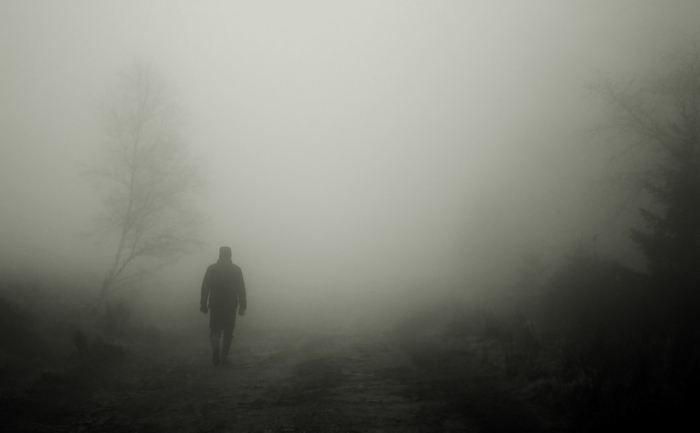
The question of “forgiveness” is complex and not easily answered, especially when some of those discussed here can no longer attempt redemption because of their deaths, and the hypotheticals of whether they would recant on their prejudices are ultimately fruitless. Also, forgiveness is not compulsory and someone who has been hurt is not obligated to give it.
Some also choose to not buy the work of an artist who has had controversy, dead or alive. While it is true this can slim the pool, there are many artists who are compassionate and open-minded people with no such scandals, and it is on the person who seeks to engage with art to choose what they can and cannot accept—and no one else.
The Severity of the Crimes or Beliefs
For H.P. Lovecraft, certain individuals, often fans, have argued that Lovecraft’s views were expressed in private conversations and personal letters. (Though he did admit to seeing lynching and violence against black people as proficient “extrajudicial” methods to protecting white people.) But if he wasn’t a member of the KKK or didn’t lynch anyone, he’s not that bad, right?
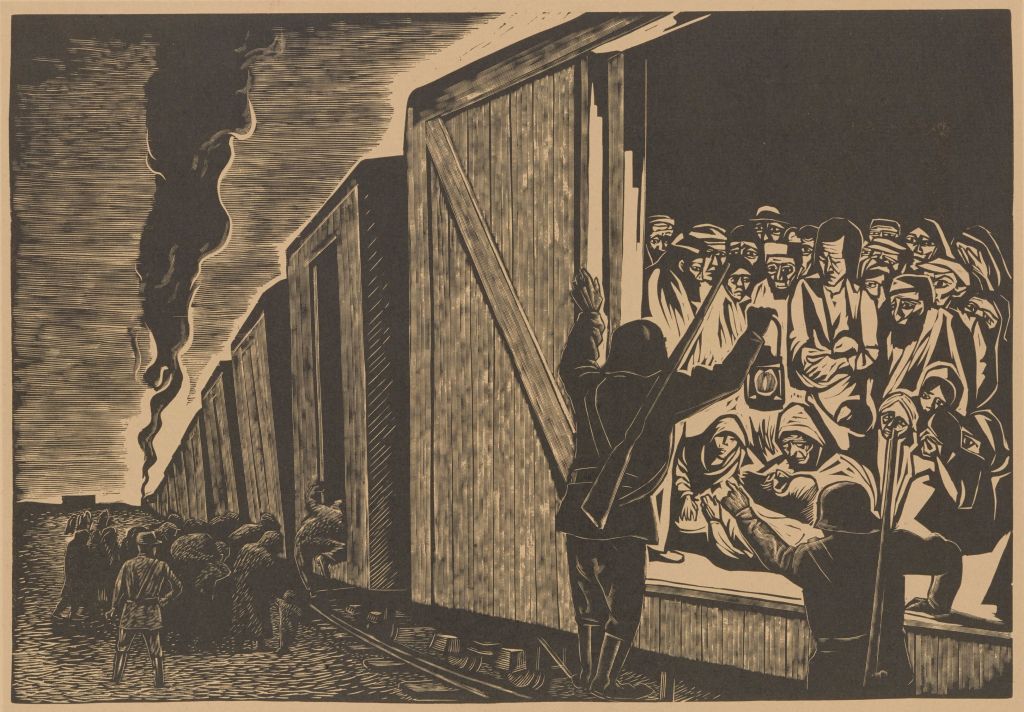
Well, this can be troubling because then one creates delineations of “bad” and “good” (or perhaps more appropriately “not-as-bad”) racism. It can lead to diminishing or outright dismissing the impact of certain acts of bigotry because it’s not as bad as the most violent culmination of systemic oppression, which is genocide. Framed like that, almost all views against other people can be deemed as okay.
Others argue Lovecraft was either as racist as anyone else during his time (to defend him) or more racist (to condemn him), but how does one quantify this in a time where indeed racism was rampant, but there were people like James Morton, Lovecraft’s friend, a vocal member of the NAACP? If Lovecraft is a product of his time, Morton is, too. Where exactly is the “line” where we place “racism that’s not as bad” or “racism that was ‘normal'” or “racism so much worse than ‘normal'”—thus implying some of the racism could be deemed more acceptable?
Some will defend the individual by saying they were joking, and that absolves them because they were not espousing genuine beliefs. At times, the accused will release an apology, and the reactions will differ wildly. The reaction to public statements depends on the way the apology is presents, whether the party accepts blame and aims to make amends going forward.
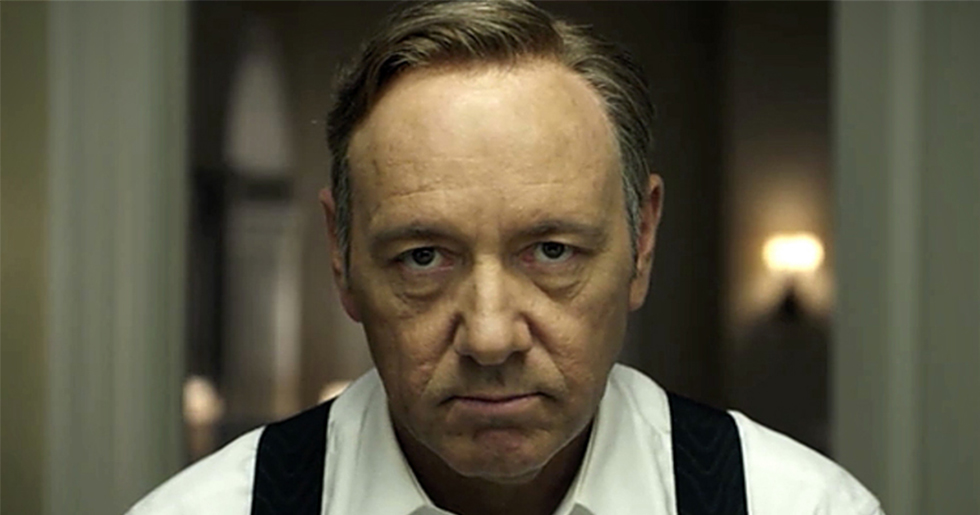
It also depends on the severity of the crime, which varies by person, as it is hard to sympathize with Kevin Spacey recounting his struggles to come out as a gay man when the catalyst of his statement involves his sexual assault of Anthony Rapp and others. Even a “my bad” would have perhaps felt less weirdly opportunistic. The feeling of accountability is lacking.

For some, there can be no attempt at redemption. David Foster Wallace, who stalked and abused Mary Karr and considered murdering her husband, threw a table at her, and attempted to push her out of a moving car, killed himself in 2008.
Whether one can know of these events and still want to read the creator’s work all chocks up to personal preference, as some can shake off a writer or actor’s personal life or identity better than others. Some may be able to watch an older Kevin Spacey film without thinking of the multiple accusations of sexual assault.
The Appearance of the Author or Artist’s Beliefs in Their Works
As discussed above, one can argue that simply because someone’s personal views are bad doesn’t mean their work is. Indeed, a good artist doesn’t necessarily make a good person.
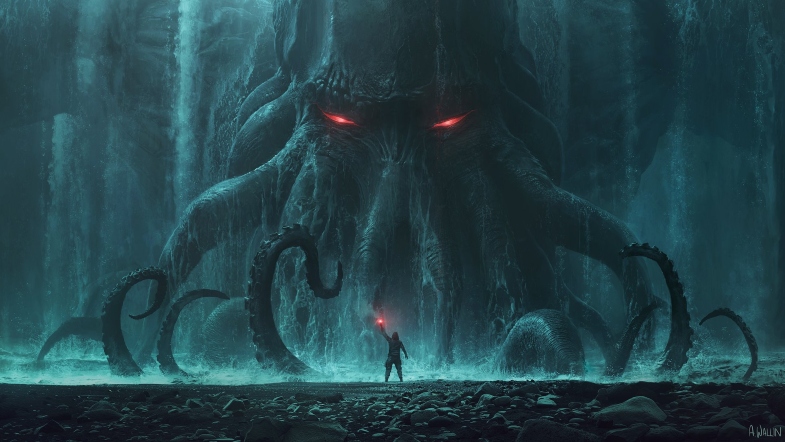
H.P. Lovecraft’s work, for some new readers, might not strike them as openly bigoted, depending on where they start. Isn’t it just a bunch of cultists and tentacled space monsters? But beyond the poem “On the Creation of N_____,” written in Lovecraft’s youth, when one reads “The Horror at Red Hook,” with the condemnation of the “hybrid squalor” of Brooklyn, or “He” or “The Street,” the fear of the “degeneration” of pure Anglo-Saxon bloodlines—often framed with economically disadvantaged “hicks” or people of color as the enemy—presents itself starkly. There is also the description of Buck Robinson in “Herbert West—Reanimator”:
The match had been between Kid O’Brien—a lubberly and now quaking youth with a most un-Hibernian hooked nose—and Buck Robinson, “The Harlem Smoke.” The negro had been knocked out, and a moment’s examination shewed us that he would permanently remain so. He was a loathsome, gorilla-like thing, with abnormally long arms which I could not help calling fore legs, and a face that conjured up thoughts of unspeakable Congo secrets and tom-tom poundings under an eerie moon. The body must have looked even worse in life—but the world holds many ugly things. 7
Also to consider is the depiction of people of color in “The Call of Cthulhu” with the main character’s relative being killed by a “nautical-looking negro” or the blatant anti-miscegenation message in The Shadow over Innsmouth. Yes, the one with fish people, although they’re more like fish-frog people. There are minor improvements, such as the neutral depiction of a black couple in The Case of Charles Dexter Ward, but no indications of Lovecraft undergoing a paradigm shift.

Orson Scott Card, however, does not seem to have extremely anti-LGBT themes in his work. Whether this influences one’s tolerance toward the work is, again, subjective.
Where does “Death of the Author” Fit in Here?
“Death of the Author” (or La mort de l’auteur, coined by Roland Barthes) wasn’t meant to explicitly pertain to discussing the problematic actions of dead authors or artists. It was an argument against then-traditional practices of using the authors’ biographical information to color the reading of a text.
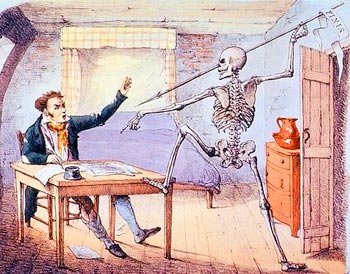
That all said, Intent is relevant here because the author’s personal beliefs constitute as part of their biography and can shape their art. If we are focusing on the problematic nature of certain artists, bringing in the idea of simply ignoring any biographical context is needed.
For some people, not considering who created a piece is easy, while others cannot get past what the creator has done. Like many instances in this article, this boundary depends on the individual. For the sake of this article, the creators are not figuratively dead, really; this writing is part-analysis, part-necromancy.
“Retconning” History?
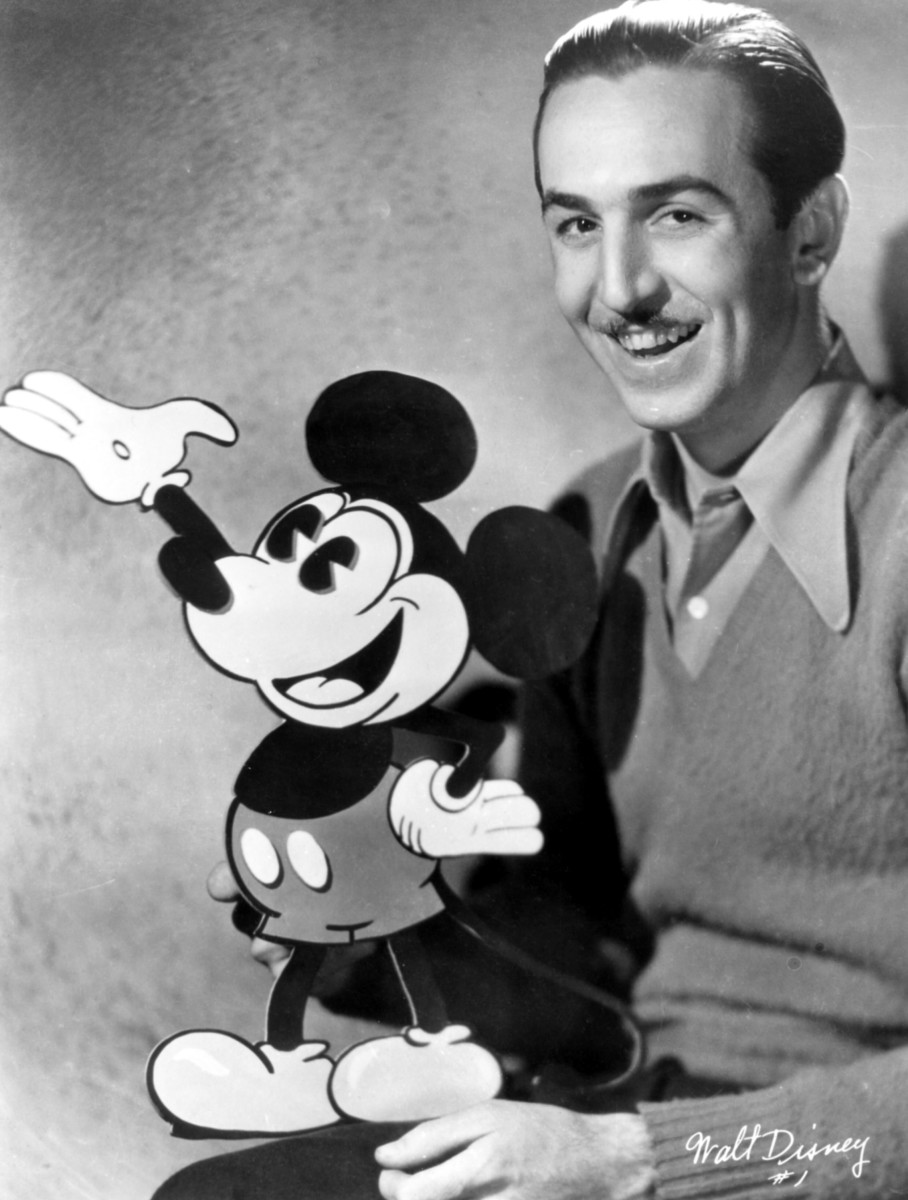
When discussing the problematic nature of certain works, questions about how to change a work, accusation of trying to change an unpleasant history arise.
For example, some publications have changed the name of the cat in Lovecraft’s “The Rats in the Walls.” There were debates on whether to omit the heavy use of a racial epithet in Mark Twain’s The Adventures of Huckleberry Finn or refrain from teaching the novel altogether.
Twain’s novel about Huck and a runaway enslaved man named Jim is not new to controversy; in 1885, librarians in Concord called it “trash” and “suitable only for the slums.” Meanwhile, there are claims that Lovecraftian fiction is antiquated or that his works should be forgotten because of the hateful subtext—or just plain text—embedded in many of his stories.
Consider the work of Disney, such as Song of the South, the crows (one named “Jim” in reference to Jim Crow laws) and workers in Dumbo, the Siamese cats in The Lady and the Tramp, and the caricature of a black dryad in Fantasia.
Lindsay Ellis, in her video essay “Woke Disney” 8, discusses the legacy of racism in Disney films, proclaiming that the modern remakes simply choose to ignore and erase the caricatures and jokes at the expense of people of color.
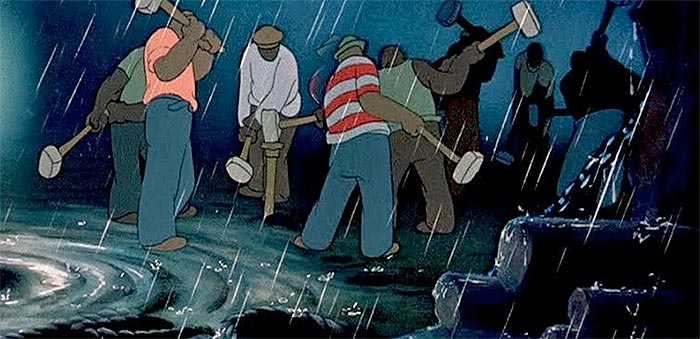
However, how does one keep the racism in but do it constructively when much of the racism in the original films involves caricatures? Perhaps a deconstructive take, such as a humanization of one of the black workers in Dumbo, would be an acknowledgment of the lack thereof in the original.
Disney remakes over-correct on “plot holes” more than genuinely facing issues in the original storylines, such as the inherit goodness of monarchy and the pro-segregation stance seen in The Lion King, where the lions are ruler divined by The Circle of Life and integrating the hyenas into society is seen as villainous and destabilizing.
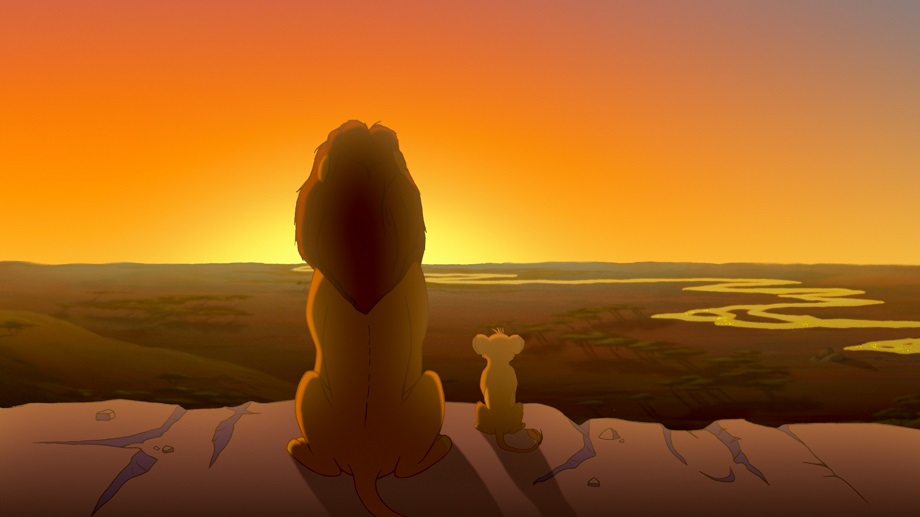
Ellis is correct in pointing out modern Disney adaptations’ tendencies to use self-referential humor to depict the past actions of Walt Disney in a poking but not overtly critical light. The idyllic vision of Disneyland and such does not mesh with reality.
When exploring whether certain works have elements now deemed problematic, one must not confuse censorship and criticism as one. The criticism of a work’s prejudiced elements is not a proclamation that such a work should not exist and the artist should be barred from creating ever again.
At the same time, though these aspects of creative work are unpleasant, we must not shy away from pointing them out and initiating conversations.
The Issue with Putting Public Figures on Pedestals
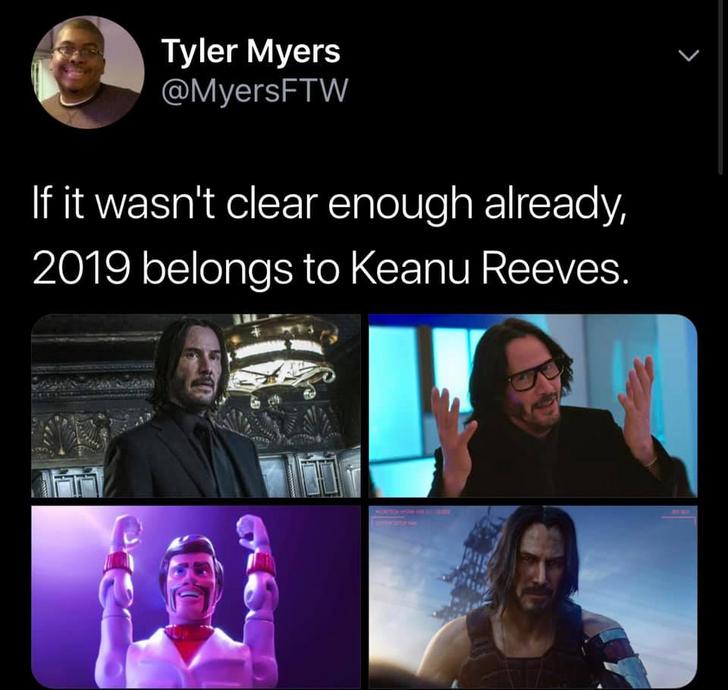
On the Internet, often certain celebrities are deemed as “pure” and “too good” or “cinnamon rolls.” They become memetic. Now, it is Keanu Reeves and Jeff Goldblum, who might indeed be genuinely good people; parsing out a public persona and the individual’s true personality comes with its own struggles. This is not about them but the phenomenon in general.
However, a danger that comes with viewing certain individuals as uniquely un-problematic or pure is that they are often not; they are complicated individuals, and we may not necessarily know what goes on in their heads, nor should we expect to do so—and a pedestal is a long fall. As mentioned above, it was Marion Zimmer Bradley’s high reputation that led to her daughter feeling as if she couldn’t speak out because her mother’s positive influence trounced the extreme sexual trauma she caused; the victim felt less important and like they’d “ruin” something for those who loved her mother’s books, so she kept silent.
There are certain artists, such as David Foster Wallace and H.P. Lovecraft, who are considered strong influences in their genres—literary fiction and cosmic horror, respectively.

They are giants, and especially in the case of Lovecraft, he is immortalized. From Annihilation to Aquaman, one will find it a challenge to go far out of the way of any mention of Lovecraft’s influence on modern media. Cthulhu plushies abound.
A positive aspect of the Internet is that there is so much knowledge available at once, which might seem overwhelming, but this knowledge includes the writings and artwork of those who may not have been able to reach an audience before.
Lovecraftian fiction has given way to neo-Lovecraftian stories that explore the original author’s works while deconstructing elements from the villainization of immigrants and black citizens of New York (see Victor LaValle’s The Ballad of Black Tom) to an exploration of gender and feminism in stories often absent of female characters with agency (see Kij Johnson’s The Dream-Quest of Vellitt Boe). Consider reading from a wealth of authors who take celebrated work and excavate the more troublesome aspects to create liberating narratives.
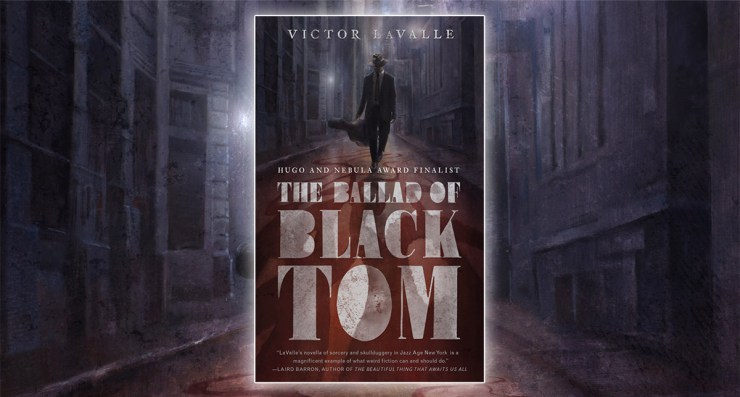
Therefore, dismissing the legacies of problematic artists might be preferred by some, but these troublesome issues have led to great art that challenges and reframes these stories. Art often asks us to engage and inquire.
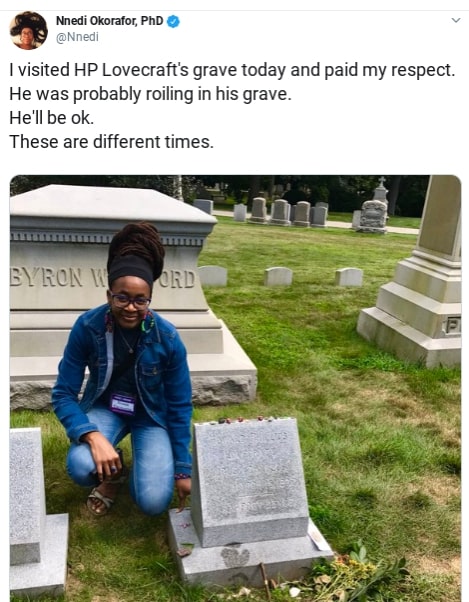
“Why can’t I just not worry about the author and enjoy the story?”
The answer: You can.
These are all considerations. In the end, there is no simple answer to whether one should choose to avoid the work of problematic artists. Frank discussions on an artists’ public beliefs shouldn’t be dismissed, but many do not think of those behind the pen, camera or computer, and there is no right or wrong way to consume a piece of art or a text.
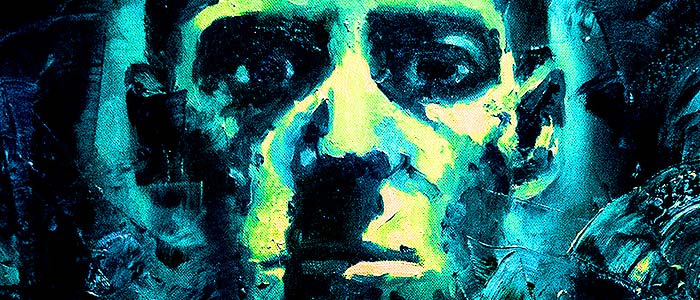
Though it is often said that one can enjoy a work but they must be critical, no set criteria exists for how somebody engages with art. Art allows us the opportunity to learn how to survive and how to connect with others. Stories are biological imperatives for us, and the way we engage with them and their creators reveals much about what we deem important in our lives.
Works Cited
- “Your Fave is Problematic.” Tumblr. https://yourfaveisproblematic.tumblr.com/ ↩
- “Problematic.” Lexico. Oxford, 2019. https://www.lexico.com/en/definition/problematic ↩
- Jernigan, Jessica. “The Book That Made Me a Feminist Was Written by an Abuser.” Electronic Literature, 2017. https://electricliterature.com/the-book-that-made-me-a-feminist-was-written-by-an-abuser/ ↩
- Power, Ed. “Loving Lovecraft: How an obscure 1920s author became the world’s favourite horror writer.” Independent, 2019. https://www.independent.co.uk/arts-entertainment/books/features/hp-lovecraft-colour-out-of-space-nicolas-cage-guillermo-del-toro-racism-a9141996.html ↩
- Martinez, Aja and Broussard, William. “Storytelling as #Resistance.” Diverse: Issues In Higher Education, 2018. https://diverseeducation.com/article/110251/ ↩
- Stein, Sadie. “Judging Flannery: Can You Love The Work And Not The Author?” Jezebel, 2009. https://jezebel.com/judging-flannery-can-you-love-the-work-and-not-the-aut-5192628 ↩
- Lovecraft, H.P. “Herbert West—Reanimator.”
http://www.hplovecraft.com/writings/texts/fiction/hwr.aspx ↩ - Ellis, Lindsay. “Woke Disney.” YouTube, 2019. https://www.youtube.com/watch?v=xU1ffHa47YY ↩
What do you think? Leave a comment.











Brilliant insight!
This is a sensitive topic that merited discussion and you have done a very good job here. Thoroughly impressed.
Personally, while this method may not resonate with people, I have actually stopped idolising any famous people since you never really know what secrets they hide. A watershed moment for me came when I stumbled across the dark side of Thomas Alva Edison. It would be distressing to similarly have many of your favourite works ruined by the fact that the artist was a less than perfect flawed being.
It is important as active consumers to critique art as well as the artist. Because the artist’s character and life puts context into their work, one can never fully separate the artist from the art. A key part of not supporting art, even from dead artists, has a lot to do with what we choose to tolerate as a culture. By discussing the works of people like Lovecraft without addressing their heinous ideologies, we run the risk of forgetting these awful things, and therefor tolerating them as a culture. In this case, we have not separated the art from the artist because the artist will always be connected with the art. Rather, we have separated the artist from said ideologies and erased an important context and history.
There is a lot of non white authors like myself who love Lovecraft and understand that his fear for the unknown, including unknown races was the fuel for its craft. Also, if you read Lovecraft you can see a change of attitude in his books, specially one of his last, The shadow over Innmouth. You just have to read the end to get he changed.
Lovecraft was an incredibly influential writer in the fantasy and horror genres, with much of his work inspired by his paranoia towards people of a certain race/creed. It’s unlikely that his abhorrent views were treated as such when he was alive too.
The society he lived in was most likely abhorrent as well.
Don’t expect artists to be good people.
(repeat as necessary)
Lovecraft was a ‘weird fiction’ author – his work embraced what we now call horror, sci-fi and fantasy. The problem with HPL is that, although his prose was certainly pretty execrable at times, he had brilliant ideas, even if they had their origins in his fears of different ethnic groups, or of women. For example, ‘The Shadow Over Innsmouth’ sounds stupid on paper, but Lovecraft, probably due to the fact he had such hangups about ‘miscegenation’, managed to turn it into something IMHO really enthralling and creepy. His huge influence over horror, especially, just can’t be denied, despite his major personal
I’m quite a fan of HPL, but agree that some of his views were rather… questionable.
Lovecraft’s influence is undeniable – he is the most influential horror writer since Poe and a swathe of writers recognise this – Stephen King, Barker, George RR Martin to name a few.
If we stopped reading the work of those with dodgy politics or nasty views, we’d need to expunge TS Eliot (Christian Zealot, fascist sympathies, anti-semitism), DH Lawrence (arch reactionary, proto-fascist), Ezra Pound (anti semetic, fascist) , Virginia Woolf (anti-semetic), Joseph Conrad (Racist), G B Shaw (Eugenics) , HG Wells (Racist), Rudyard Kipling (Imperialist) and so many others from the Canon. I say, enjoy the book, keep an ideological distance.
You can easily enjoy the work and celebrate that while separating it from the man!
I’m conflicted about this. I’ve always deplored the influence of Lovecraft because his prose is horrendous, but his horror is massively influential and all of the horror in his fiction is racialised. He was simply afraid that the fragile white psyche is too vulnerable to survive in a world which is teeming with horror. And all of this horror is basically, for him, anything which is not white.
So you can’t reject him as a racist without uprooting all of his art as well – something which is, for me, too philistine to contemplate. Appreciating a lot of modern horror means, unfortunately, that you have to live with Lovecraft’s racism.
Lovecraft’s racism and myriad neuroses about sex and contagion all get sublimated into supernatural horror, and it’s rare that his fiction feels overtly racist. It’s not racist to be repelled by the Deep Ones, even if they arise from HPL’s feelings of repulsion for non-white people.
And indeed many people have written lots of Lovecraftian fiction and pastiche without needing to be racists themselves.
If you insist on artists being good and upright people, the galleries, theatres and concert halls might be empty.
Nonsense if that were the case you are suggesting they are somehow worse than the rest of society. Most people whatever their foibles are pretty decent the same applies to artists they have a talent that doesn’t make them morally degenerate.
Art is not so rare, good, bad and indifferent the problem isn’t there is too little of it there is if anything over recorded history an abundance of it which is constantly being reinvented.
The difference is that artists put their foibles on display or stage wherease the ordinary people just entertain them at home or pub.
Some in the art world seem to think they operate at different level to ordinary people.
Art is important but not all art is important.
Good article. Thanks!
Art always has context, be it time, place, person or subject – you can’t strip it away when otherwise it does become meaningless.
I feel sorry for people cursed with artistic ability , I really do . It’s such a shame that most struggle to survive whilst compelled to do the thing they love . Its obviously a lottery who gets to hit the big time , and sad that their artistic integrity has to be compromised to tailor their work to the market .
The nazis at Dora Mittelwerk in Germany under the second world war killed 22,000 slave workers. Should we therefore reject the nazi engineers rocket ballistic calculations ?
While we’re going here – what about all the genetic experiments that were done on prisoners of the concentration camps? We still ‘use’ the learnings of those experiments and it could even be argued that a lot of good had happened building on those findings over the decades. What is worse, throwing out all the research because of the people who did it and the evil barbaric way it was conducted and have them have suffered in vain, or by using this to save the lives of countless other millions thereby honoring the victims and them not having died in vain? Point being, it’s not black and white. As they say, even a broken clock is right twice a day.
On one hand Lovecraft is a giant of twentieth century SF and supernatural horror fiction whose ideas have had a profound influence on these genres.
On the other hand, from a literary standpoint he wasn’t all that great (younger writers he inspired like Stephen King and Thomas Ligotti are better than him by an order of magnitude) and aside from his well-documented bigotry he makes a terrible role model: a childish man who lived in isolation eating candy and entertaining himself with violent fantasies. Sound familiar? I can easily see Lovecraft participating in Gamergate. It was his kind of thing really.
We do not have to accept the continuation of the world as it was. Lovecraft’s racism used to be acceptable. Now it is not. Times change, opinion changes, and there is no going back. Therefore, once things have changed, the worship of pre-change icons such as Lovecraft become unacceptable. Unless, of course, you keep a special place in your heart for Uncle Joe Stalin, Adolf Atleastthetrainsranontime Hitler, and the other cultural heroes of the non-PC brigade.
I think that I’ve arrived at the crux of the problem. H. P. Lovecraft is a great writer, one could even now say a great writer, whose work has enriched humanity and allowed us to better cope living in a universe that is without any meaning except what we create for ourselves. He also held racist views. Many people, including myself, believe that the former outweighs the latter. Some believe that the latter cancel out the former.
I approach this question from a historicist perspective, after all, I am not one to sit in judgement of the past or the actors involved in it. That being said, I think an excessive focus on critical theory often diminishes the text as a thing in itself; a fact I have come to know from the experience of attending the lectures of an excessively historicist English professor. My general way of reading literature for non-historical ends is to engage in close reading; I enjoy Card’s works because of its content and not necessarily because of him as a person. But it also helps because I’m an out-and-out historicist who rejects universal morality. Each era has its own spirit.
Nicely done and a well balanced appraisal of a tricky subject.
Very thoughtful article. I like that you avoided throwing any specific celebrity under the metaphorical bus. We really need to do something about combating celebrity/idol worship and putting public figures on pedestals.
It’s a complicated subject. How do you engage with an artists work if they were an awful human being? Does it make a difference if they’re dead? Does it change how you feel if they’ve apologized? How comfortable do you feel supporting a terrible person who’s reaping the benefits of the attention you pay them?
None of these questions come with easy answers. It’s easy to bury your head in the sand and consume content with no regard for the consequences but I think it’s important to be a responsible consumer. Very thoughtful article, thank you for sharing.
A very sensitive handling of a difficult topic.
Its about art and what it means, which has more to do with an expression of the collective unconscious rather than any personal proclivities. People with highly developed sensation functioning have always been tainted by perversions, it’s the nature of the beast.
Of course art can be seen in isolation from the artist but most art is better understood if you know something about the artist, about their life and times, about their motivation about their craft.
Knowing or having revealed an aspect to an artist’s character or the deeds they may have done will of course colour your perception about their work. It is one thing not knowing, for instance that some ornate altar was used for thousands of ritual sacrifices, but once you know, you look at it differently. It is the same thing but it has now been transformed. For some people it might create a frisson that adds to their viewing of the work, for others it becomes utterly repugnant. We have our own moral and ethical filters.
Why is art given this special place outside of life? It’s part of life and should and should therefore suffer the same strictures. You don’t argue for the same indulgence for scientists we look at the ethical implications of their work so how can you divorce art from life when it’s inextricably linked?
There is much to admire in Lovecraft’s fiction, and much that is clumsy, and amateurish. The darkness is always there, as is his life-long fight against himself. He loved to pose, and like many socially-isolated posers, seemed to be ignorant of the real old implications of his words. There is derivation galore – many of his stories are pastiches of Blackwood, Dunsaney and Machen, but his singular contribution – rejection of classic horror tropes and their replacement with cosmic indifference – propels it into new territory.
I can respect – indeed love – the work and the man, but still see the darkness and speak against it.
In some aspects, the deep racism that pervades Lovecraft’s work is part of what makes it great; the paranoid and irrational underbelly of the scientistic eugenics popular at the time. Lovecraft was racist by the standards of the time, let alone now.
Lovecraft. Discovered via tatty paperbacks when I was fourteen. Captured my imagination then an since. Immense influential talent. That said, can totally believe him to have been rascist …. there is a distaste and disgust evinced by his characters from time to time, one of the many symptoms of unease his characters undergo.
I once knew an old Nazi (a Hitler Youth who had been captured in Normandy) who was deprogrammed at a special camp in Alabama after the war. He said that at one particular lecture he’d been told that all races are fundamentally the same and that people should be treated equally. He pointed out that if that were the case, then why was it only black men and women were picking cotton in the fields near the POW camp. “Two big GIs picked me up, took me outside and soon persuaded me not to ask awkward questions,” he told me…
Your former Hitler Youth acquaintance made a very fair point. There’s something rather unpleasant about the revisionism of the WW2 victors seeking to (rightly and deservedly) damn Hitler for his racism, while continuing to indulge their own. Always makes me wonder why, when they’re so keen to laud Jesse Owens for besting Hitler’s Aryan supermen, nobody ever asks whether he’d have been allowed to compete or train on the same field as white athletes in his own country…
Reactions to Lovecraft can be extreme. He’s buried in Providence, RI, where so far as one can tell, the dominant view on him seems to be that it would be much preferable if he had never existed at all. Get locals talking about him and you may hear some spectacular rants (I did!) denouncing not only Lovecraft’s writing and personality, but also the personality and motivation of those who read and enjoy any of his work. It’s interesting to contrast this with the way Baltimore treats E.A. Poe – a museum, a monument, a regular bunch of events so forth. There has also been discussion of Poe’s views on racism and slavery, but by comparison very little time is spent on beating Poe and his readers up on the subject. That’s partly because Poe’s work leant less heavily on the subject and is relatively ambiguous, but I suspect the fact that almost a century lies between the authors also has much to do with it.
The fact is Lovecraft is unlikely to have written the stories he did had his personality not been tinged with a sense of paranoia and gloominess. The contemporary theme of promoting apparently faultless, all-embracing and cheery cultural figures has and will continue to reduce literature to a circle-jerk of mediocre writers praising each other for their timidity and lack of talent.
I’ve read all of Lovecraft and he is no worse in his published fiction than many other writers of his era (I certainly find the imperialism in most writers of the age a lot more offensive than HPs racism) and the only difference between him and everyone else at the time is that his vast personal correspondence has been studied and published.
Don’t get me wrong, Lovecraft was almost certainly a shitbag of the first water, he was as weird as hell at the very least and very definitely raised in very odd surroundings but in terms of his horror/scfi writing he still casts the longest shadow in the genre.
A very nice breakdown of how pernicious creators can be contextualized.
Applying death of the author can be difficult, not just regarding long-deceased authors from half a century ago. Many contemporary authors are respected beyond the aesthetic appeal of their works. Would Toni Morrison be as respected without knowledge of the insurmountable odds she and er works faced in publishing? Would the Harry Potter franchise (as a literary work) found success without Rowling’s life story accompanying? It’s hard to say, because many readers crave identifying with the creators of works they love.
Regardless, I appreciate your article.
Very good piece given today’s indignant zeitgeist. It’s up to rational-thinking people to stand up the the current march of the thought police.
People who we admire for their art are often not very pleasant or just plain weird. Edgar Allan Poe married a 13 year old for example.
I thought John Peel did similar. Married a minor or something, after having sex with lots of girls who may well have been underage (“Well, of course I didn’t ask for ID”). I’m always amazed that when I go to Glasto there’s a John Peel tent and that the BBC often roll out a documentary in his memory.
But I suppose you’re right. He was someone who recognised good music and played it, helping to get a few brilliant careers up and running. So, I suppose we should forgive him a few dubious dalliances…
In my view, the first thing to keep in mind about Lovecraft is that he was an extremely mentally-disturbed individual (I personally think he had a mild autism spectrum disorder), and he communicated this in his writing. While this obviously doesn’t excuse his racism and xenophobia, it does make it a little more understandable, especially since he lived in a world where racism was a fact of life and rarely questioned.
That being said, I’m the kind of person who wouldn’t necessarily shun a writer for having some weird or obnoxious beliefs, as long as the art they made was relatively good and they didn’t openly flaunt or make a big deal out of those beliefs. If I knew someone was a criminal or otherwise had done something truly terrible, I’d be more likely to think twice about patronizing them. I might still take a gander on their work, but I wouldn’t pay for the privilege.
I would also caution people against picking up adaptations of problematic works just because they seem more “enlightened.” The works might be just fine but they aren’t always objectively better. I actually read The Ballad of Black Tom, and while I thought it was entertaining enough, it suffers from anachronisms and a cast of frankly horrible, unlikable characters (of course, Lovecraft’s own stories generally feature characters with no personality, which might be even worse depending on your point of view).
I’ve never been a fan of Lovecraft. Knew nothing of his views until reading this.
The truth is we want the artist to be extraordinary, to be frank, to be unorthodox, to be brutal and crass, we don’t want him or her to be as ordinary as we are. And then we love to throw stones at the artist.
It’s sometimes said that it’s the artist’s struggle with whatever demons they may have or their outsider status from society, as the case may be, that informs their art.
Very interesting article on the concept of problematic authors. In my experience, I think there’s a cultural tendency to equate someone’s “good” works with the author’s virtue. If a work was “good” (which can merely mean their aesthetic, narrative structure, and such), then surely the author is also “good” as a person. And in the case of when we do know that an author said and/or did horrible things, I’ve found myself talking with people who proclaim to separate the art from the artist as a way to maintain their vision of the “good” artist, and not as a way to only focus on the art.
I’m reminded of a 18th-19th century theory on the possible co-authorship of William Shakespeare’s Henry VI, Part 1. The theory arose when people became uncomfortable with Shakespeare’s villainous depiction of Joan of Arc and, not wanting to attribute such a characterization with Shakespeare, theorized that there must have been another author involved.
Some people might want to separate the art from the artist to enjoy the work for itself, but I’ve met others that do it for the sake of maintaining their enjoyment of the person itself, because, I believe, we’ve reached a cultural point in which the glorification of the artist is almost a given, for the most part. I think there’s also the nostalgia situation, which is a topic that I can’t get into with a full understanding, because I haven’t experienced a level of nostalgia for things that would hurt me if I found out something awful about their creators.
As you explained, the separation of art from artist will always come down to the individual. It’s an uncomfortable topic, especially when a work has meant so much to many people. What I would like of everyone who engages with art to do is this: Ask yourselves, for your own sake, why you would want to do the mentioned separation. Some might have a clear answer, but for those who don’t, this question might help them with their own engagement and enjoyment of art, from whoever it may be.
Back in the early 20th Century it was usual for people to be racist. The US Army was even segregated in WWII.
Really interesting piece, know you mentioned early on how this wasn’t a piece on cancel culture. But would sure like to read one from you that is!
I very much like many of Lovecraft’s stories, but it’s undeniable that the man was a virulent racist who considered black people sub-human.
I’m not sure you can separate the art from the artist.
For example if I painted some coloured dots on a canvas it would be worth 50p, if Hirst does it then it’s worth thousands.
In a documentary on Lovecraft it shows that in later life he began to change his previous attitudes on race.
The art speaks louder than the reputation once enough time has passed.
Very interesting and nuanced article!
A couple of random facts, related – I hope – to the topic:
Polanski received the Best Director César Awards, about a month ago, and it triggered heated debates and reactions, at least in France.
Roland Barthes, at the end of his career, nuanced a bit his point of view on the death of the author. (Though, of course, it wasn’t because of ethical or social considerations, only theoretical ones.)
This is a super interesting piece. I too find it difficult to decide when it’s appropriate to separate art from the creator. In the end, I do feel like it comes down to whether they’re alive or not, and whether they have been idealized in the mind. For example, people like Roald Dahl and Dr Suess are questionable but they have such a bit impact on people’s childhood that the emotion their works created seems more powerful than the terrible beliefs they held.
This article really addressed issues I’ve been wondering about and debating for a long time. I occasionally justify my consumption of controversial works by the means of seeing them through a new critical lens (outdated form now but still useful here). The people who committed these atrocities along with creating some of the greatest works of art in history are giants whose influence will never go away. We can rewrite these stories histories and excavate the meaning by way of re examining such characters as the maid in “Gone with the Wind,” her voice may be gone but can’t inaction speak as loudly as actions and even more loudly than words? People are complex and geniuses even more so: we cannot put a magnifying glass to the lives of anyone without revealing some faults and inexcusable, stubborn qualities.
Nobody’s perfect and unfortunately many horrible people are given a platform to stand on, enjoying music, or a movie or a book is hard to to if you know a horrible person had something to do do with it but hell if you like it you like it as long as you acknowledge the person and see the difference between the art and the artist.
Wow, what a well-thought out piece. All the nuances and complexities of this explosive topic are discussed with tact!
After 5 years spent in two universities, across two Arts degree programs, I have been getting a little tired of “problematizing” every cultural text we came across. Couldn’t we celebrate anything anymore? That’s what I keep thinking to myself. But you write in your essay, “criticism of a work’s prejudiced elements is not a proclamation that such a work should not exist and the artist should be barred from creating ever again” – this is true. I realize now that the enjoyment and critical analysis of a text aren’t mutually exclusive.
Our belief and worldview are often bound by the context where we are situated and a slip of the tongue doesn’t degrade one’s character. As long as an artist’s offensive remarks are not obvious in the artwork, I’m willing to look past the imperfection.
Very interesting. Separating an artist from their work can be tricky for some people especially when it bleeds into their art. Thank you for this.
The difficulty of this topic was explained so articulately! I wish that I would be able to say such well rounded arguments whenever this topic is brought up but perhaps it would be better to just show others this article. Whenever I condemn an author, people never seem to understand that it is simply because I cannot stand to look at their work anymore and not because I think badly on everyone who still enjoys it. These things just need to be thought about critically. Thank you for putting these complex ideas into easy to understand arguments that I can show others.
This is an amazingly thorough article. I feel like my natural inclination is to “separate the art from the artist,” but I really struggle with this. My reasoning is that (especially nowadays) people can project any version of themselves that they want through their artwork and, of course, through media. I’m a shit person, but sometimes I write nice things, or so I’d like to think. No one would know if they picked up something I wrote. I also totally get the issue with financially supporting a monster. But I tend to think that a monster’s art is not the monster — it’s separate, and just as worthy as anything else. Hm… great article!
I think this is a very prevalent topic in the present day. Especially with ‘stan’ culture. It seems that people are, perhaps, scared to engage with problematic artists lest they be accused of being similarly problematic.
Definitely an issue to grapple with.
I first read a Houellebecq novel and thought “wow this man is great!!” but then learned that he was a rather offensive person and then I felt a little guilty for praising him.
Very interesting insight!
Overall, I think this article is really well written. I will say, I am not sure if including the supposed answer is actually beneficial for this type of piece. I say this because I think that providing an answer makes it too clear cut. I understand, I think, what you were going for. However, I think leaving it more open-ended would allow the reader to really reflect on the issue at hand, and make their own conclusions.
I enjoy art by bad people as a catharsis from my superego’s incessant desire to be good.
It is important that one does not judge a work by the author, or judge an author by their work. Wagner produced great music even though his character is not admirable. The same goes with every artist that is mentioned in this article.
As preached by Aldous Huxley in Perennial Philopshy ‘venerate the knowledge, not the messenger’. These incidents and many more I read about made me come to realise the old thought that we are born with moral or even theists favourite argument that ‘religion gives morals’. This is truly put to the test at times like this. I have seen first hand change their entire moral beliefs jto justify the actions of someone they like due or someone they look upto. They will throw one under a bus and give the other one a lift. Made me come to realise that our morals deep down are connected to our biases
The phrase ‘never meet your heroes; you will be disappointed’ tends to spring to mind for a number of people for different (even competing) reasons here.
When thinking about separating the art from the artist, I fall in the gray area where I find myself defending classic novelist’ “problematic” literature of ‘a product of the time’ but then I refuse to watch a Polanski film because of his abhorrent self. The idea that has stuck with me is that I enjoy art by bad people, so to speak, no matter how much I don’t want to or how my inner moral compass wants me to feel. Your article has given me a lot to think about regarding my own perspective.